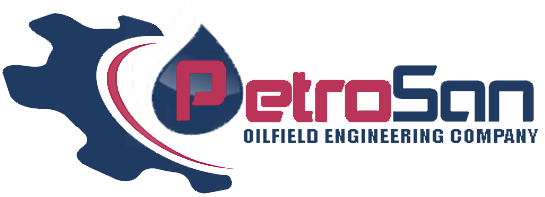Foam Pigs
Foam pigs are employed in many different processes, including cleaning, gauging, batching, dewatering, drying, and flooding. The suitability of pipelines for pigging less flexible pig types, like metal-bodied pigs, can also be demonstrated using foam pigs. Propipe Foam pigs’ flexibility makes it safe to run in lines with wax or scale buildup, particularly when deposit volumes are unknown. From basic swabbing or scout pigs (for line proving) to heavy density wire brush or studded pigs, foam pigs can be supplied with a range of aggression.
PetroSan’s passion is Producing high-quality pipe line repair split sleeves for long-term pipeline Proving foam Pig, Swabbing foam Pig, Drying foam Pig, Wiping foam Pig, De-watering foam Pig, Scraping foam Pig, Product Removal foam Pig, Debris Removal foam Pig, Cleaning foam Pig, Aggressive Cleaning foam Pig, Silicon Carbide Foam Pig, Foam Disc Pigs, Pulling Facility Foam Pig, Pipeline Clean Foam Pigs.
Standard Features :
• Medium or Heavy Density for up to 300km
• Supplied as Bare / Coated Ends / Criss Cross Poly Coated / Fully Coated
• High Grade Polyurethane Elastomer • Conical Nose and Concave Rear
• Bore Passing Up to 40% bore restrictions
Optional Features
• Cleaning brushes (carbon steel, stainless steel or nylon bristle)
• Bare, Criss Cross Coated or Fully Coated
• Bi-Directional
• Abrasive Coating
• Dewaxing Pads
• Descaling Studs
• Gauging Plate
• Tracking Device
• Pluggable Bypass Ports
• Signal Magnets
• Pulling / Lifting Loops

Pipeline Foam Pigs are a type of pipeline cleaning and maintenance tool used to clean, inspect, and maintain pipelines in various industries, including oil and gas, petrochemical, and water treatment.
What are Foam Pigs?
Foam Pigs are cylindrical or spherical devices made of a flexible, foam-like material, typically polyurethane or polyethylene. They are designed to be inserted into a pipeline and pushed through by fluid pressure, allowing them to clean and inspect the pipeline as they move through.
Types of Foam Pigs
1. Cleaning Pigs: Used to remove debris, sediment, and contaminants from pipelines.
2. Inspection Pigs: Used to inspect pipelines for damage, corrosion, or other defects.
3. Gauge Pigs: Used to measure pipeline diameter and detect any restrictions or blockages.
4. Sealing Pigs: Used to seal pipelines and prevent leakage.
Benefits of Foam Pigs
1. Effective Cleaning: Foam Pigs can remove a wide range of contaminants and debris from pipelines.
2. Reduced Maintenance: Regular use of Foam Pigs can help reduce the need for more invasive and expensive maintenance procedures.
3. Improved Safety: Foam Pigs can help identify potential safety hazards, such as pipeline damage or corrosion.
4. Increased Efficiency: Foam Pigs can help optimize pipeline flow rates and reduce energy consumption.
Industries that Use Foam Pigs
1. Oil and Gas: Foam Pigs are widely used in the oil and gas industry to clean and maintain pipelines.
2. Petrochemical: Foam Pigs are used in petrochemical plants to clean and inspect pipelines.
3. Water Treatment: Foam Pigs are used in water treatment plants to clean and maintain pipelines.
4. Other Industries: Foam Pigs are also used in other industries, such as power generation, chemical processing, and food processing.
Foam pigs are incredibly useful pigs made for cleaning, scraping, or drying pipelines. A short pipeline can be dewatered using a foam pig coated with polyurethane. A flexible, bullet-shaped polyurethane foam cylinder makes up the design, and the back is concave to increase pressure. This eliminates product contamination by strengthening the seal against the pipe wall and preventing propelling agent by-pass. There are three different density specifications for foam pigs: high, medium, and low. The type of application will dictate which density is best. For instance, a high-density pig would be ideal for longer runs with several turns and vigorous cleaning action, while a low-density pig might be used for drying and light cleaning tasks.
Additions available:
• Handling Rope
• Double Dish
• Double Nose
• Cavity for mounting transmitter Medium Density
• Non-Ferrous brush – nylon brush or Velcro for use on internally coated pipelines
• Stainless steel wire brush • Single Spiral Coated
• Gauging Facility – with or without aluminium gauge plate
• High strength magnets for tracking facilities
• By-pass facility – pluggable
• Polyurethane scraper blades
• Extra-long – for extended sealing applications
• Extra short – for ball valve or launching and receiving facilities
Here are some Google search keywords related to Pipeline Foam Pigs:
General Keywords:
1. “Pipeline Foam Pigs”
2. “Foam Pigs for Pipelines”
3. “Pipeline Cleaning Pigs”
4. “Pipeline Inspection Pigs”
5. “Pipeline Maintenance Pigs”
Industry-Specific Keywords:
1. “Oil and Gas Pipeline Foam Pigs”
2. “Petrochemical Pipeline Foam Pigs”
3. “Water Treatment Pipeline Foam Pigs”
4. “Power Generation Pipeline Foam Pigs”
5. “Chemical Processing Pipeline Foam Pigs”
Application-Specific Keywords:
1. “Pipeline Cleaning and Maintenance”
2. “Pipeline Inspection and Testing”
3. “Pipeline Corrosion Protection”
4. “Pipeline Scaling and Paraffin Removal”
5. “Pipeline Pigging and Scraping”
Product-Specific Keywords:
1. “Foam Pig Types”
2. “Pipeline Foam Pig Sizes”
3. “Foam Pig Materials”
4. “Pipeline Foam Pig Manufacturers”
5. “Foam Pig Suppliers”

